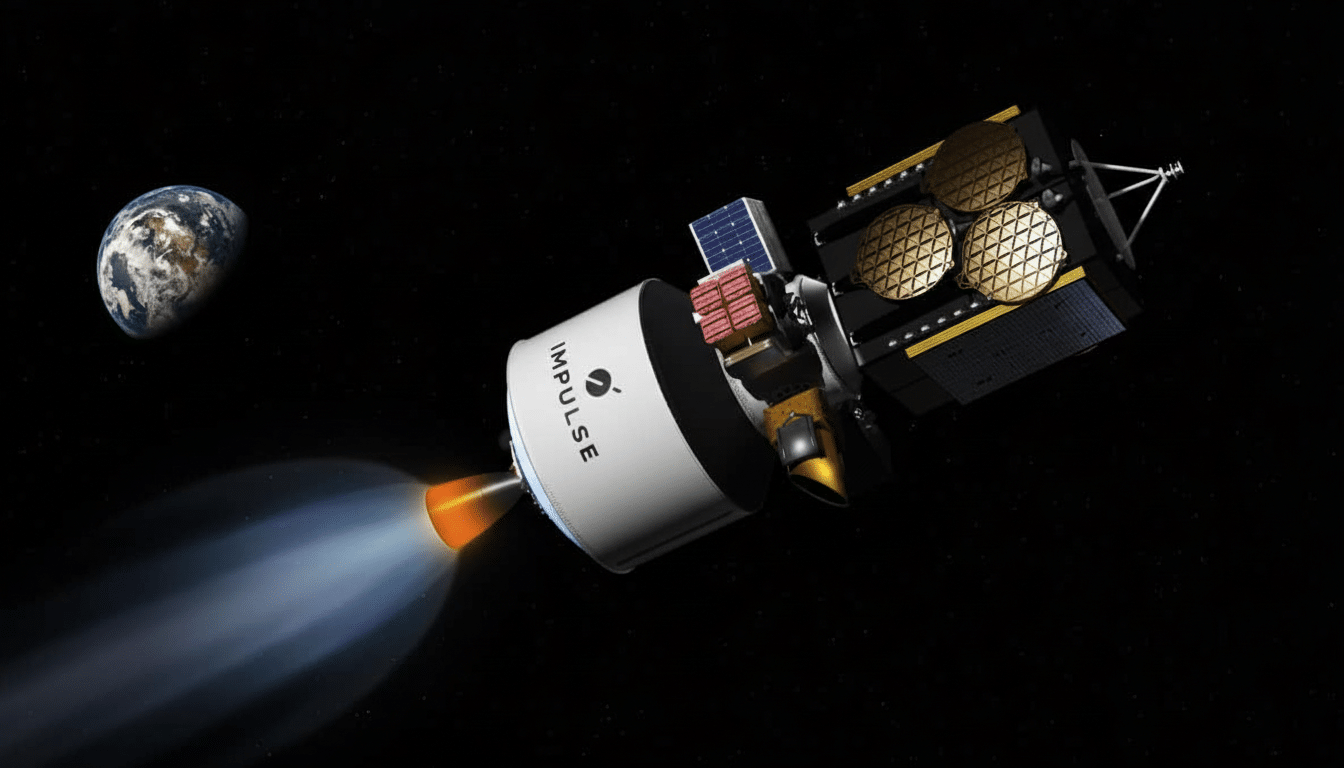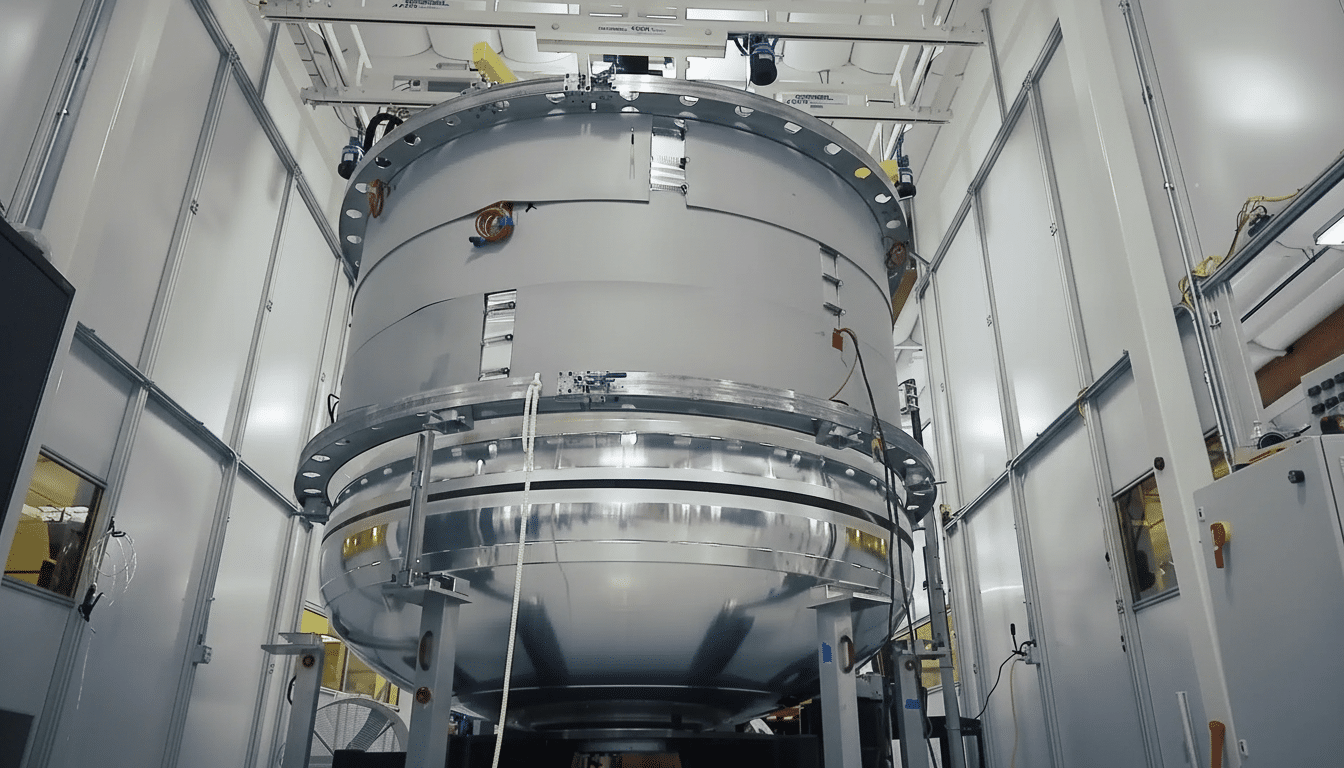Impulse Space is on course for a direct path into the Moon’s logistics market with the aim of shuttling as much as six tons from Earth to rendezvous with the lunar surface annually. The approach pairs a new lunar lander with the company’s high-energy Helios transfer stage, and takes aim at a payload class that has struggled to come up with affordable rides: payloads too large for most commercial landers, but well short of human-rated ones.
A midscale lunar cargo plan targeting six tons annually
The company can achieve about two surface missions per year, collectively moving around six tons, by utilizing a repeatable and modular architecture, it says. Established by former SpaceX’s chief of propulsion, Tom Mueller, Impulse Space is marketing this service as a low-cost gap between tiny science payloads and mega-tonne human systems.

That midscale tier just keeps looking better. NASA’s Commercial Lunar Payload Services program tends to fly instruments and technology demos in the tens to hundreds of kilograms and forthcoming human-rated landers from SpaceX and Blue Origin are meant for multi-ton, tens-of-tons deliveries. That provides a significant opening for medium rovers, habitat components, power plants and communications nodes.
How the lander and Helios transfer architecture works
In Impulse’s concept, a commercial launcher sends the lander and Helios stage to low Earth orbit. This stage performs the translunar injection and braking burns, putting the stack into a low lunar orbit in approximately a week. The lander would then detach, descend and land on the Moon, before turning on its operations on the surface.
Helios is a high-energy kick stage intended to remove the need for on-orbit refueling and reduce transport times.
The company is developing the lunar landing engine in-house — it uses the same propellants as Mira’s Saiph thrusters, meaning no new services are required to be built up to provide them. Propellant sharing between stages also limits the complexity at staging and mission integration.
“For precise landing on the Moon, you really need a throttleable, restartable engine with good specific impulse and fine attitude control — that’s kind of required across NASA lander guidelines…and shown in recent commercial missions,” he said. Dealing with regolith plumes, keeping stable in low gravity and flinging rocks onto tiny landing ellipses are core design challenges for Impulse’s lander.
Filling the lunar logistics market gap with midsize cargo
The most recent CLPS flight awards between Intuitive Machines and the manifest created by Astrobotic showcase today’s divided marketplace. Most CLPS landers max out nearer half a ton to the surface, with specialized exceptions like Astrobotic’s Griffin, which is delivering NASA’s VIPER rover and lands in the several-hundred-kilogram category. On the other extreme, human-rated systems — in SpaceX’s case a Starship-derived lander and Blue Origin’s cargo and crew variants — are designed for very large, complex deliveries.

Impulse Space is aiming for the neglected middle, from half a ton to over ten tons or so. The range includes things like medium rovers, unpressurized or modular habitat sections, kilowatt-class power kits, comms relays for extended polar missions and infrastructure such as drilling rigs or resource processing demonstrators. Those payloads are heavy enough to tax little landers but do not require the full brawn or cost of human-class vehicles.
The value proposition is cadence and specificity — dependable slots for individual, mid-mass payloads. For government customers, it could bring routine Artemis surface infrastructure deliveries. For international agencies and startups, it provides space for more end-to-end missions that don’t have to play second fiddle on giant landers with busy manifests.
What to watch as Impulse tackles engineering and demand
There’s a certain prowess that comes with technical execution; it’s the first thing to hurdle. A lunar descent engine has to throttle down a lot, restart very quickly and perform in vacuum and dusty conditions. Guidance, navigation and control will need to deal with terrain relative navigation and plume surface interaction. These are the types of roadblocks that have tripped up missions in the past, and Impulse is going to require a lot of ground testing — not to mention incremental flight demos — in order to retire risk.
Market traction is the second. Anchor demand might include infrastructure delivery for NASA, polar outpost establishment by allied space agencies, and defense users for cislunar space domain awareness. Commercial interests are looming as well, with companies eyeing lunar communications, power beaming and resource utilization. But reviews by NASA’s Office of Inspector General and analysis conducted by large consultancies have emphasized the logistical delta between planned lunar missions and available transportation — exactly the gap Impulse seeks to address.
If Helios establishes a steady cadence of flights and the lander is consistent, the Moon ultimately might proceed toward a ridesharing approach. You could throw multiple mid-mass payloads on one manifest, or start setting regular “delivery windows,” and we might see something similar to the way low Earth orbit became more accessible as a result of standard services. The company has indicated it will scale its operations to the level of demand, an approach that would enable capacity to be matched with a lunar economy that is in its infancy.
Bottom line on Impulse Space’s lunar logistics ambitions
By combining a high-energy transfer stage with a dedicated lunar lander, Impulse Space hopes to drive midsize surface logistics and ferry as much as six tons of cargo annually. It’s an audacious play at a time when science missions, infrastructure and commercial ambitions are all converging. If the engineering makes sense and customers sign on, the Moon’s supply chain could get an essential middle tier.

